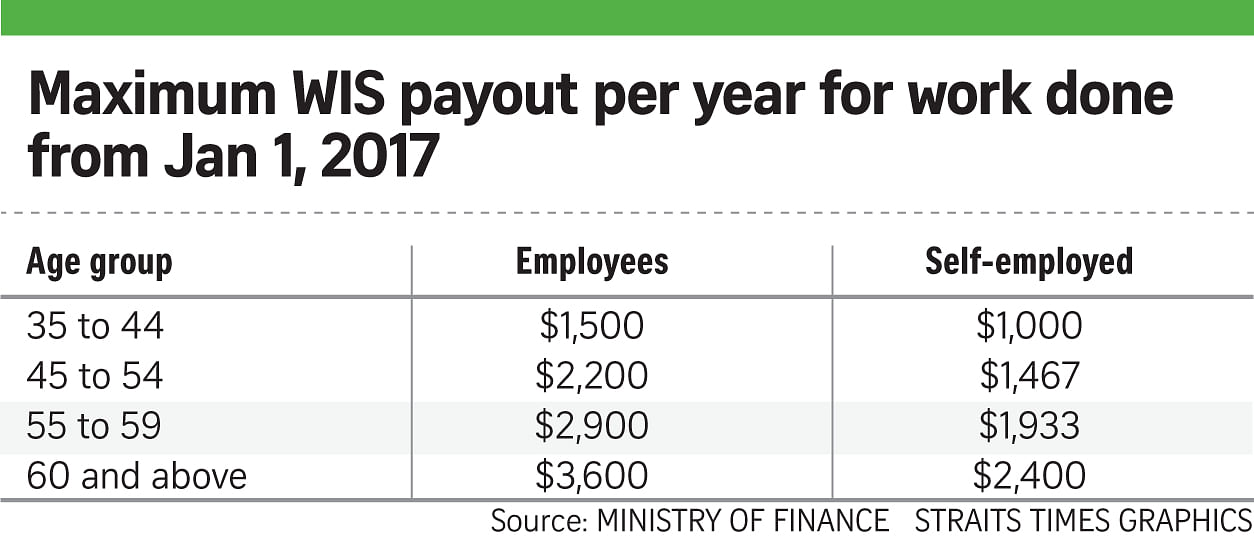Low-wage workers who qualify for Workfare will get larger and more frequent payouts starting from next year. A funding scheme for training is also being expanded to allow younger workers with disabilities to benefit from it.
Announcing these changes yesterday, Finance Minister Heng Swee Keat said that the income ceiling for the Workfare Income Supplement scheme is also being raised from $1,900 per month to $2,000.
This has become necessary because more people have moved up the pay ladder since 2013 and could have fallen out of the programme, which aims to help the lowest-earning 30 per cent of the citizen workforce.
When the ceiling was last raised from $1,700 to $1,900 in 2013, about 480,000 Singaporeans were expected to be covered by Workfare. Now, setting the ceiling at $2,000 means that about 460,000 people will qualify. This kicks in for work done from Jan 1 next year.
Mr Heng said eligible workers will also receive higher payouts.
Depending on age and income, Singaporeans on the scheme may receive up to $3,600 a year in Workfare income supplements, up from $3,500 now. For example, those earning $1,000 to $1,600 a month will see their payouts increase by between $100 and $500, with older workers continuing to receive more than younger workers.

The money will still be channelled to workers in cash and to their CPF accounts in a ratio of 40 to 60. So someone aged 55 earning $1,200 a month will get a total of $2,900 for a year's work from the scheme, with around $1,200 given in cash and $1,700 deposited in his CPF account. And after 10 years, this will translate to $3,500 more in CPF savings.
-
$2,000
New in come ceiling, up from $1,900, for the Workfare Income Supplement that tops up the pay of low-wage workers
Payouts will also be given out more frequently - every month, instead of once a quarter, said Mr Heng. For example, a worker could receive payments at end-March for work done in January, rather than having to wait until June.
This is because the qualifying criteria for the scheme will be simplified to tie payouts to every month worked. Currently, workers are only eligible if they work two out of three consecutive months, or three out of six consecutive months, or six out of 12 months in a year.
Tying payouts to each month of work will be more timely and effective for workers, said labour MP Patrick Tay, who is also the chairman of the Government Parliamentary Committee for Manpower.
"It will encourage them to take up short-term work, such as contract work," he noted, adding that this is is something that the National Trades Union Congress (NTUC) has been lobbying for.
Reiterating the rationale for Workfare, Mr Heng said in his Budget speech yesterday that the changes are part of the Government's measures to build a caring and resilient society. "For adults, we focus on opportunities through work, through which we learn and contribute, and derive personal pride and dignity," he said.
The total budget for Workfare income supplements will be around $770 million a year, he said.
Meanwhile, younger people with disabilities will also have more funding to upgrade their skills under the Workfare Training Support Scheme, which previously included only people aged 35 and above.
Besides lowering the age limit to 13, the Government will also raise the income ceiling to $2,000 a month, up from $1,900.
These changes also broaden the reach of the Training Commitment Award under the scheme, which provides cash awards of up to $400 a year to encourage people to complete their courses.
Fellow labour MP Zainal Sapari, who heads the NTUC unit that oversees low-wage workers, said that this is "part and parcel of us trying to move towards being a more inclusive society".
But providing the necessary training for people with disabilities can only go so far, he said. "We need a change in the mindset among employers to want to employ them."
- Additional reporting by Toh Yong Chuan

